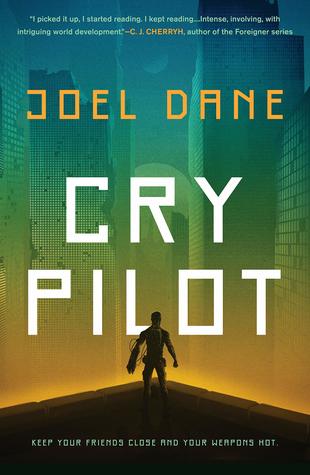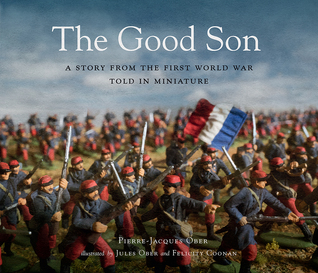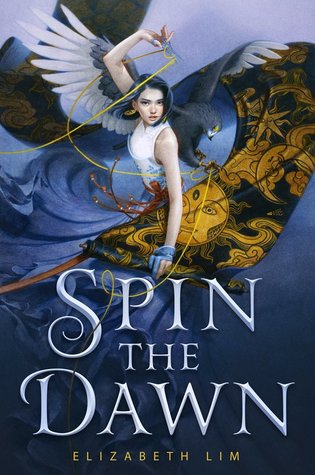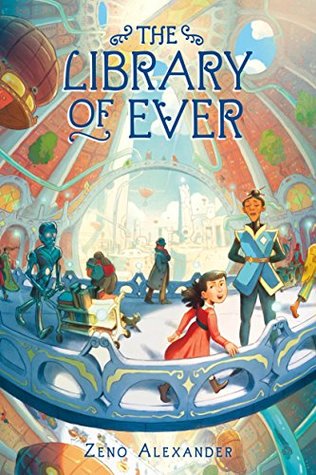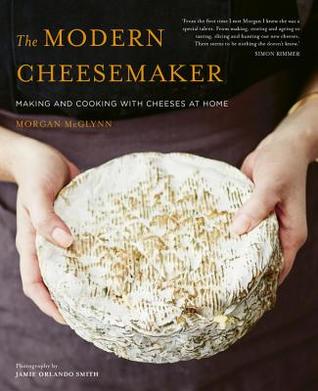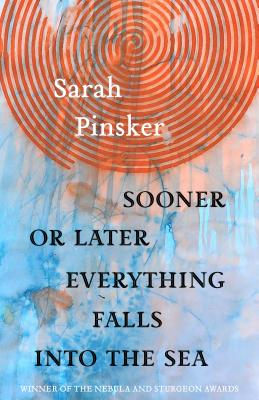Book Blog: Cry Pilot by Joel Dane
I review everything I read and post reviews on Goodreads and LibraryThing. That’s not enough. Good books are meant to be shared. Therefore, I’m spotlighting some of my favorite reads here on my site.
Cry Pilot by Joel Dane
out now; Indiebound, B&N, and Amazon
I received an advance copy of this book via NetGalley.
By the description, I expected far-future sci-fi. Cry Pilot is that, and a whole lot more–like a cyberpunk and military scifi combination, all in an original take on post-climate-change apocalypse Earth.
Kaytu is a complicated young man trying to do right. He’s a gutter rat, a former refugee, and he has set his eye on military service with one of the major corporations that holds dominion over Earth. With his background–which only emerges in perfectly-paced detail across the book–he’s forced to take a more criminal route, which gets him assigned to be a cry pilot–essentially, a piece of meat dropped into an AI-driven mecha that does battle with other bio-machines that threaten to undo the resettlement and terraforming of the planet. Most cry pilots die. He does not–nor does the flighty drug addict with him. Together, they soon find themselves placed in different roles as they train to face a horrific threat unlike ever seen before.
With some scifi books with a far-future setting, it feels like the emphasis is on the world and tech and the characters are outright tropes. Not so here. Everyone feels vivid and alive. Kaytu’s peers are an eclectic bunch, and as he became attached to them, so did I (a dangerous thing when they are facing some pretty nasty threats). The world is incredibly immersive and detailed, and it builds in just the right way; I never felt overwhelmed. Not only is the tech advanced, but social constructs are radically different, too, but this is handled in a casual, natural way. Poly relationships are common (and make perfect sense, given the need for humanity to repopulate) and sexual preference is fluid.
I found the book to be absolutely enthralling. Not only is the story fantastic, but as a writer, I can only admire the elegant pacing of the world’s construction. This is a book to point to as an example of how to do scifi right.
Read MoreBook Blog: The Good Son: A Story from the First World War, Told in Miniature by Pierre-Jacques Ober
I review everything I read and post reviews on Goodreads and LibraryThing. That’s not enough. Good books are meant to be shared. Therefore, I’m spotlighting some of my favorite reads here on my site.
The Good Son: A Story from the First World War, Told in Miniature by Pierre-Jacques, Jules Ober, & Felicity Coonan
out now; Indiebound, B&N, and Amazon
I received this hardcover book through the LibraryThing Early Reviewer’s program.
This is a picture book for children, but don’t assume it’s about rainbows and happy endings. It’s not. This book is intense. It is honest. It is bleak. Without a drop of red, it depicts the horrible nature of war. This is a book that might really bother some kids (and parents), but I see this as a book to inspire some hard but necessary discussions.
Without even considering the content, the The Good Son is an artistic masterpiece. It is fully illustrated through the use of toy soldiers, elaborate sets, and brilliant use of perspective. The effect is stunning. The use of toy props doesn’t cheapen the message in the slightest. On the contrary, the pages look eerily realistic at times. I think kids will really connect to the scenes because there ARE toys being used–which again, might be bothersome for some, but that is something to be worked through.
The text is minimal but effective. This book would be quick to read, but so much is happening in many scenes, I found myself lingering on each. The set up for the book is stark: a young French soldier named Pierre went AWOL for two days over Christmas to visit his mother, and upon his return, he is imprisoned and sentenced to death. He is to be made an example of to prevent further desertions. Pierre reflects on his time as a soldier and what he has learned about his German enemies as he awaits dawn and his execution. Again: this is not a book with a happy ending. That’s the nature of life, and of war–especially the Great War.
Some people might argue that the very premise makes this a horrible book for kids. I strongly disagree. There’s a great Madeleine L’Engle quote: “You have to write the book that wants to be written. And if the book will be too difficult for grown-ups, then you write it for children.” Children aren’t oblivious. They see and experience a lot. Teaching them that war is glorious and that heroes can’t be killed does not do them favors in the end. This book uses toy soldiers to get on the same level as kids, and respects their ability to understand what unfolds.
Read MoreBook Blog: Spin the Dawn (The Blood of Stars #1) by Elizabeth Lim
I review everything I read and post reviews on Goodreads and LibraryThing. That’s not enough. Good books are meant to be shared. Therefore, I’m spotlighting some of my favorite reads here on my site.
Spin the Dawn (The Blood of Stars #1) by Elizabeth Lim
out now; Indiebound, B&N, and Amazon
I received an early galley through NetGalley.
Spin the Dawn takes a myriad of genre tropes and spins them in an incredible way, resulting in a book that’s surprising, fast to read, and immense fun. The back cover copy pitches it as Mulan meets Project Runway, and that’s certainly an apt description of the book’s first third; after that, it becomes a fresh take on a fairy tale romantic adventure.
Maia is the Mulan prototype, but instead of dressing as a boy to become a soldier, she disguises herself to compete to be the emperor’s tailor. This competition is still a kind of war, though. Not only are her peers sabotaging her efforts, but the emperor’s fiance is uncooperative and sets up impossible challenges–and then there’s the fact that if Maia is outed as a girl, she’ll be killed for lying to the emperor. When she finds out the scissors gifted to her by her father are magical, she doesn’t want to use them; to my delight, she truly wanted to succeed by her own merits. I loved Maia for that.
Of course, there’s a romance, too, and it’s an incredibly well done one. I enjoyed how it developed and yikes, did the end deliver some major surprises.
I added this book to my list to consider for the Norton Award for next year. It’s that good. I hope its release is heralded by lots of positive attention, and I’ll certainly look for other books in the series.
Read MoreBook Blog: The Library of Ever by Zeno Alexander
I review everything I read and post reviews on Goodreads and LibraryThing. That’s not enough. Good books are meant to be shared. Therefore, I’m spotlighting some of my favorite reads here on my site.
The Library of Ever by Zeno Alexander
out now; Indiebound, B&N, and Amazon
Oh my goodness, I adored The Library of Ever. This book is everything a cozy middle grade book should be. I wish I could go back in time and press it into the hands of my ten-year-old self with a conspiratorial wink.
Lenora is ignored by her wealthy parents and her nanny, but this comes in useful sometimes–like at the library. She makes her escape to the children’s section where she confronts a man in a bowler hat who is trying to tell a young boy that books on science are too advanced for him. After seeing the boy get to the books he wants, a fantastic archway appears in what had been a blank wall. She walks through, and finds the Library of Ever.
I envisioned her adventures in the library like a Hiyao Miyazaki anime. Everything is fantastical and weird, yet within this world, absolutely believable. Lenora is quickly dubbed a library worker of low rank, bestowed a badge and everything, and happily goes to work. As she helps patrons–jumping ahead in time to resolve a calendar issue, wandering a massive globe and befriending whales and penguins (and finding out some purported facts about the longest town name and highest mountain aren’t true)–her rank advances, as do her responsibilities.
While the book is sure fun, there’s also a powerful message behind everything about the dangers of censorship and the power of knowledge. The men in bowler hats are a threatening force. As Lenora is scolded at one point, “I thought you were wise enough to understand that children must be discouraged from asking questions that will make them curious and fretful. Perhaps I overestimated you. After all, you’re just a child yourself.”
“Maybe,” said Lenora, with equal frost. “But I’m also a librarian. And I’m not going to hide the truth from anyone.”
Just typing that up again gives me chills. This book is powerful. It’s charming. It’s an inspiration. Plus, it’s hilarious. Sure, there’s a message, but it’s wrapped up in whimsy and joy. This would be a great book to read aloud to a group or class. I found it to be a fast read, too; I zoomed through in about 45 minutes.
Read MoreBook Blog: The Modern Cheesemaker: Making and cooking with cheeses at home by Morgan McGlynn
I review everything I read and post reviews on Goodreads and LibraryThing. That’s not enough. Good books are meant to be shared. Therefore, I’m spotlighting some of my favorite reads here on my site.
The Modern Cheesemaker: Making and cooking with cheeses at home by Morgan McGlynn
out now; Indiebound, B&N, and Amazon
I received an electronic galley of this book via NetGalley.
I am known for my passion for artisan cheese. For me, it’s a Pokemon-like gotta-catch’em-all joyful hunt. However, I’ve never tried making cheese, even though I’m a baker and I love experimenting with diverse recipes in the kitchen. What little I had read about home cheese-making left me very intimidated.
That attitude has shifted after reading this book. Morgan McGlynn is a cheese-monger and cheese-maker in the UK, and she has written a book in which I feel like she gently took me by the hand and showed me step by step how to make my own cheese. The book is organized by level of difficulty, too–start with fresh cheeses like mozzarella and ricotta, and work up to hard cheeses (hard in texture, harder and more time-consuming to make) like aged Cheddar and Brie.
This isn’t simply a recipe book, though it does indeed feature recipes for 18 cheeses plus some 40 recipes for utilizing that cheese. This is a book about the basics: the science of cheese explained in straightforward terms, a breakdown of the equipment needed to safely and successfully make cheese, and also information about professional cheese-makers along with a list of some of the best cheeses in the world to seek out. To make this all even better, there are abundant full-color photographs that illustrate the steps and show what the finished results should look like.
Oh, and I should add that all of the information is presented in measurements friendly for readers/cooks in Britain, America, and elsewhere. The recommended places to buy supplies are also not focused on one specific locale. McGlynn wants to help you make cheese, no matter where you live.
I think I’m going to get a large pot and a few other new additions for my kitchen and finally give homemade cheese a go. The idea does still intimidate me, but now I feel like I have a guide to help me on my way.
Read MoreBook Blog: Sooner or Later Everything Falls Into the Sea by Sarah Pinsker
I review everything I read and post reviews on Goodreads and LibraryThing. That’s not enough. Good books are meant to be shared. Therefore, I’m spotlighting some of my favorite reads here on my site.
Sooner or Later Everything Falls Into the Sea by Sarah Pinsker
out now; Indiebound, B&N, and Amazon
I received this galley through LibraryThing Early Reviewers.
Sarah Pinsker is among my favorite writers, and I was thrilled to read her new collection from Small Beer Press a few months in advance of release. When I say she’s among my favorites, that also means I’d read most of the stories in this book before; four were new to me, but one sees its first publication in this book.
All of these stories are worth re-reading. Actually, they are worth studying on a technical level to understand why stories work. Pinsker doesn’t write about big drama. She writes about people being people in sometimes extraordinary circumstances. There’s a sense of subtlety to her works. In “A Stretch of Highway Two Lanes Wide,” a man loses his arm, and along with his prosthetic he gains an awareness of being a road in remote Colorado. “Remembery Day” addresses PTSD and the effects of war on the next generation, without ever becoming preachy. In “And Then There were (n-one),” one of my very favorite novellas, period, she brings a brilliant spin to Agatha Christie’s “And Then There Were None” by envisioning a cross-dimensional conference of hundreds of Sarah Pinskers on an isolated island in a storm–and one of them is murdered.
Because of this collection, I started my document to track my favorite 2019 releases to nominate for awards in 2020. Yes, this collection is that good.
Read More



